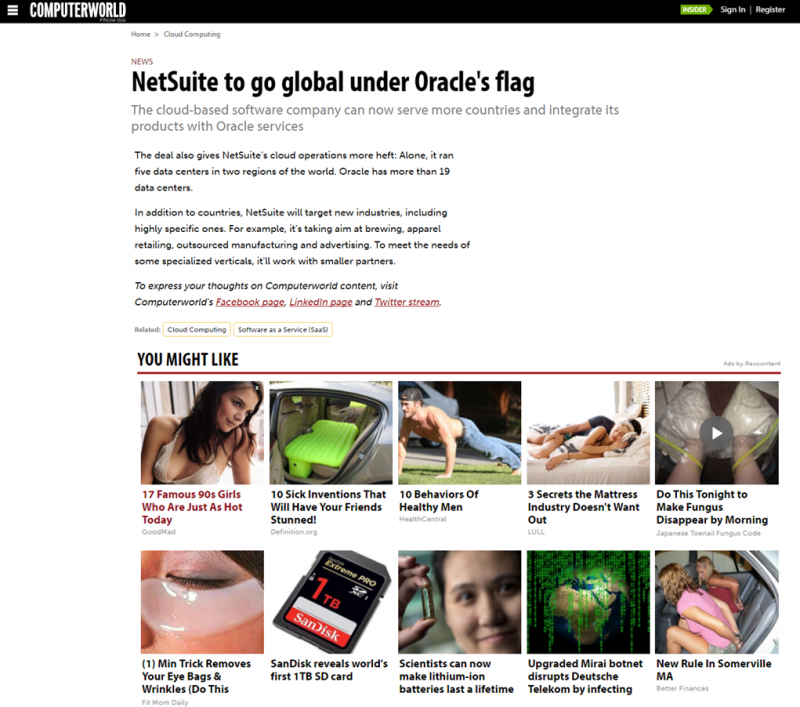- December 6, 2016
- Advertising, Content
Just How “Native” Is Your Native Advertising? Branded Content Marketing vs. Content Discovery Platforms
 According to the Association of National Advertisers (ANA), 96% of marketers say it is important for ads to be contextually relevant to the surrounding editorial content. Native advertising fully embraces this by integrating sponsored content directly within the content environment it is running. At best, native content seamlessly matches the form and function of the site it is running on, providing users with additional relevant options to continue their research. At worst, it departs from and/or degrades the editorial environment in which it appears.
According to the Association of National Advertisers (ANA), 96% of marketers say it is important for ads to be contextually relevant to the surrounding editorial content. Native advertising fully embraces this by integrating sponsored content directly within the content environment it is running. At best, native content seamlessly matches the form and function of the site it is running on, providing users with additional relevant options to continue their research. At worst, it departs from and/or degrades the editorial environment in which it appears.
For some, native is seen as a way to disguise advertising so that it appears as if it is content from the website or platform it is being promoted on. For others, it is a genuinely new approach to marketing that truly integrates within content and seeks to provide the same level of value as the domain it is being published on.
Branded Content Marketing vs. Content Discovery Platforms (CDPs)
Currently there are two prevailing methods for native advertising: Branded Content Marketing and Content Discovery Platforms. Branded Content Marketing is a form of native advertising that is a great way to leverage authority and reach your audience in the location and format they choose to perform their research. Content Discovery Platforms represent a cheap way to get your ad messaging out, “integrating” your content across a large volume of sites.
Below, we review both approaches to help you make the right decision when it comes to driving better results from native advertising.
Content Discovery Platforms
Content discovery platforms are the “around the web” ads that are syndicated in either rows of links or boxes of ads that appear under articles on many news and general information sites powered primarily by Taboola and Outbrain, among others. These sites use an implemented software recommendation platform which attempts to match the advertisers “recommended” content with the sites own content. This recommended content is not always identified as marketing content. The priority here is to drive as much traffic as possible at a low cost, rather than provide a relevant, customized experience for the user, raising a debate as to just how “native” they are.

Advertisers can either pay for placement (reach) in these content recommendations or approach on a pay-per-click model. While this strategy offers a cheap way to get your ad messaging out in quantity, it presents many challenges and shortcomings (see example):
- Non-contextual Alignment: Due to poor targeting, it’s very unlikely your ad content will be aligned with the articles it will appear.
- Clickbaiting: Many advertisers resort to using sensationalized or misleading titles and images which don’t have anything to do with the actual content in order to bait the user in to clicking. You’ve all seen the “Top 10 Most Shocking Ways…” headlines. While entertaining at times, there is no real value to the user.
- Questionable Websites: Because the goal is clicks, rather than leads – or even valuable interactions, the majority of sites using this tactic are run by unknown entities which may present false information.
Because of the lack of targeted, technology focused sites, these challenges are even more apparent in the B2B world – especially when it comes to context. And without any kind of targeting or the ability to integrate with very specific tech subjects, B2B marketers are paying for impressions that don’t bring their business any value.
The result is that you may get clicks, but you aren’t generating interest with targeted buyers. More likely, you’re paying for clicks from curious but unqualified buyers.
Branded Content Marketing
B2B technology buying is rarely transactional and the key to marketing success is the ability to guide the target audience from initial awareness through short-listing and purchasing. This is done more effectively through the use of and alignment with quality content.
In stark contrast to CDPs, Branded Content Marketing is not a reach play, but a strategy in which the brand creates custom, native content that is aligned and integrated with the publisher’s site, simulating the editorial experience. This strategy creates a more integrated experience and higher quality engagements because it is posted on the publisher domain, and interjected into the researcher journey. It also matches how buyers want to perform their research. 70% of buyers prefer to learn about products via content interactions.
Advertisers choose specific destination sites or communities of like-minded end users to place content on because they know their audience reads and respects the authority of that site. Ads that navigate the visitor away from the publisher site lose that borrowed authority. Content that keeps them in the same place they choose to perform their research is much better received.
However, simply blending with the overall tone and appearance of the publisher site isn’t enough. If native content is simply a thinly veiled sales-pitch, then it will not be successful, and risks turning off the buyer. The challenge with native advertising is always going to be ensuring that your ad content is topically relevant, educational and aligned with the audience needs.
How TechTarget Can Help You Drive More Effective Native Advertising Results
Our approach organically integrates branded content marketing within independent content to deliver an immersive learning experience, accelerating the efficiency of the user’s research and education process. Since 1999, TechTarget has developed and distributed strong content to attract qualified enterprise tech buyers and our native advertising solution adopts this same business model – our content development expertise combined with our distribution and network integration strategy ensures results.
TechTarget can help you integrate your branded content marketing to match the value and authority we’ve established in 10,000 unique IT topics. We consult with our advertisers and help create content for our native campaigns to ensure it aligns with our audience needs. With so many subtopics available, we ensure that any native content is contextually relevant to the content and searches that will lead visitors to it. This way, advertisers are only targeting qualified buyers that are most likely to benefit from and respond to their content which is why, on average, our native advertising campaigns increase recommendation intent by 25%.
If you are interested in learning how to achieve better results with TechTarget’s Native Advertising offerings, contact us today.
b2b branding, brand consideration, branded content marketing, content discovery platforms, content marketing, Native Advertising



